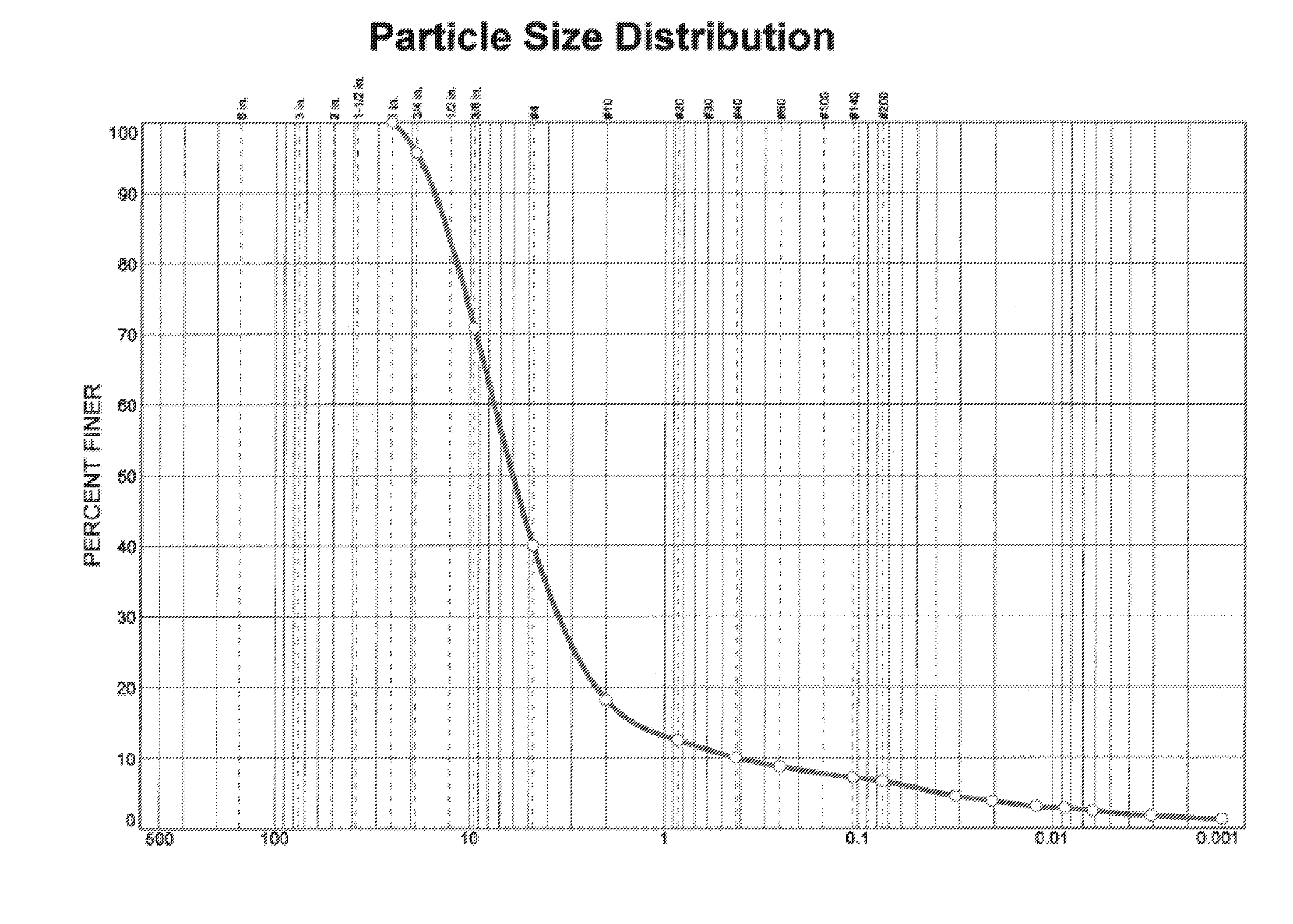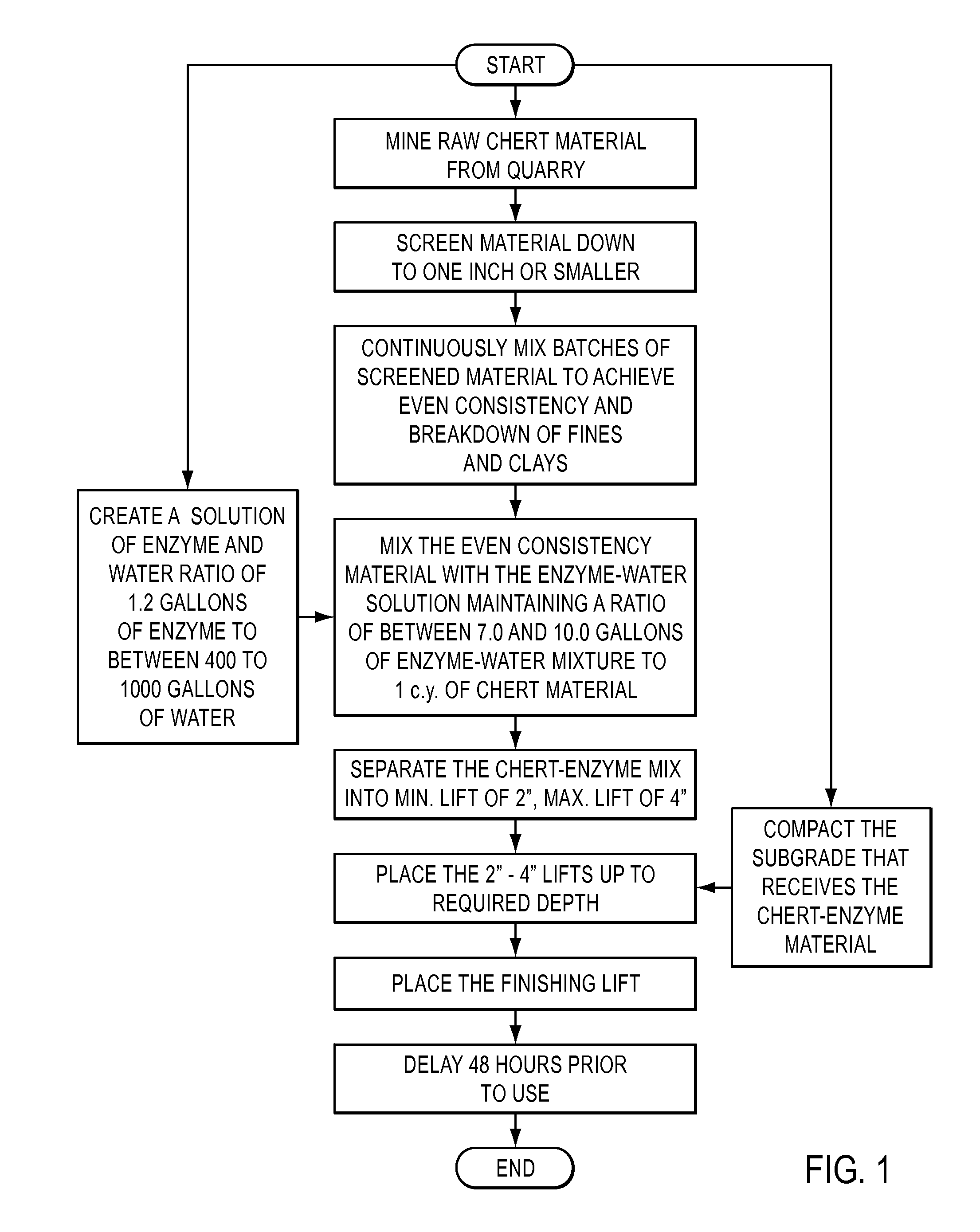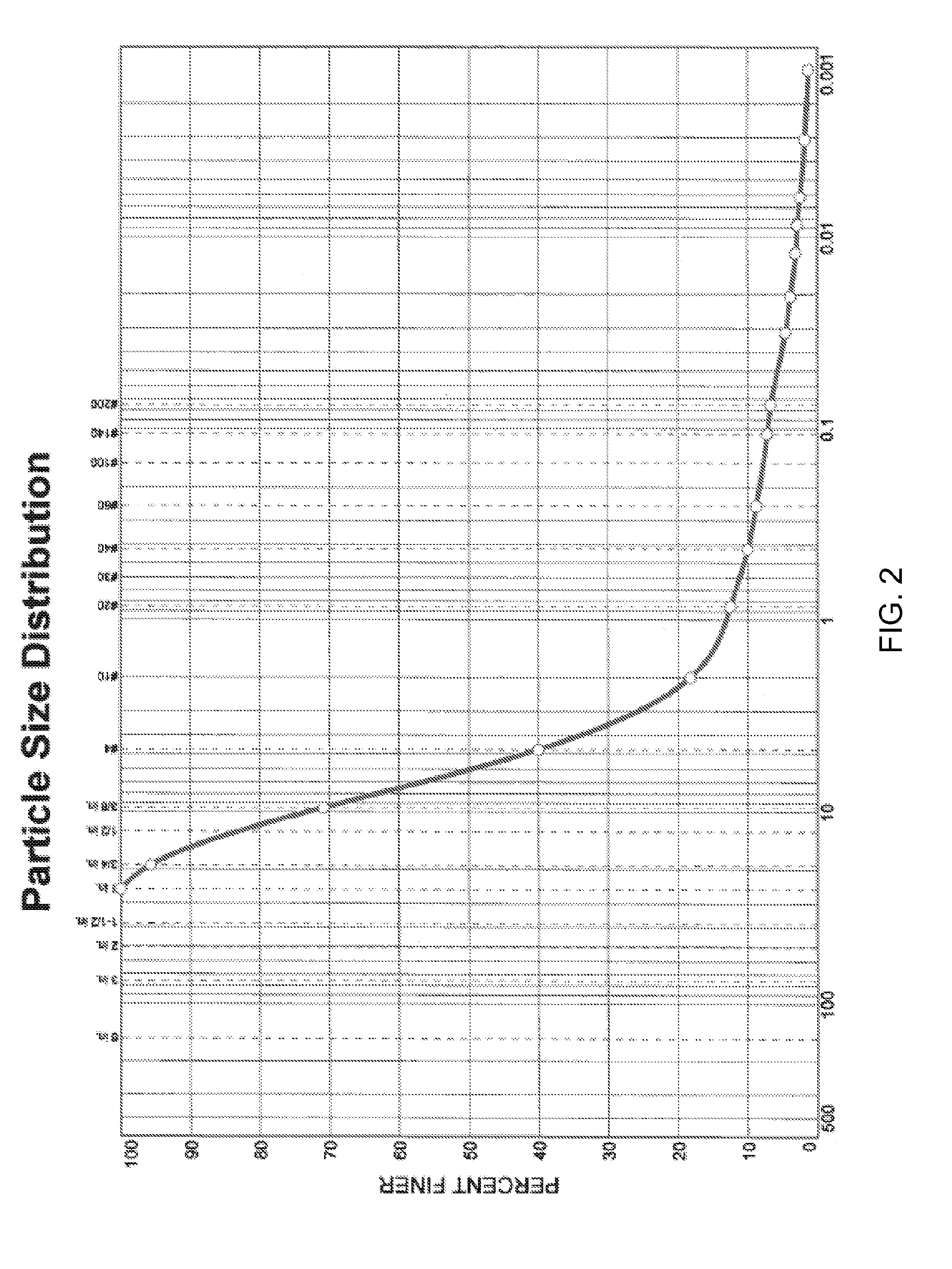Method and material for paving a surface
a technology of paving and surface, applied in the direction of sidewalk paving, roads, roads, etc., to achieve the effect of maintaining structural integrity and stability, superior to other products on the market, and maintaining structural integrity and appearan
- Summary
- Abstract
- Description
- Claims
- Application Information
AI Technical Summary
Benefits of technology
Problems solved by technology
Method used
Image
Examples
Embodiment Construction
[0021]The raw chert is commonly obtained, directly or indirectly, from a quarry, and it may be advantageous to select a specific vein of chert from the quarry to provide the optimal raw material for making the paving material. This selection process can be done by the preparer or an assistant prior to the purchase of an individual order of chert material. The inspection can be done for not only quality assurance but for certainty that the proper combinations of raw minerals are used. In one embodiment, the chert is made of the following particle sizes by percentage: (a) gravels having a particle size between about 25.4 mm and 5 mm; (b) a variety of sands (fine, medium and coarse) having a particle size between about 5 mm and about 0.1 mm; (c) silts and clay having a particle size between about 0.1 mm and 0.001 mm, according to FIG. 2. The minerals present by approximate weight percentage are Montmorillonite (25%), Chlorite (25%), Quartz (15%), Feldspar (15%), Mica (5%), Calcite (3%)...
PUM
| Property | Measurement | Unit |
|---|---|---|
| Time | aaaaa | aaaaa |
| Time | aaaaa | aaaaa |
| Thickness | aaaaa | aaaaa |
Abstract
Description
Claims
Application Information
 Login to View More
Login to View More - R&D
- Intellectual Property
- Life Sciences
- Materials
- Tech Scout
- Unparalleled Data Quality
- Higher Quality Content
- 60% Fewer Hallucinations
Browse by: Latest US Patents, China's latest patents, Technical Efficacy Thesaurus, Application Domain, Technology Topic, Popular Technical Reports.
© 2025 PatSnap. All rights reserved.Legal|Privacy policy|Modern Slavery Act Transparency Statement|Sitemap|About US| Contact US: help@patsnap.com



